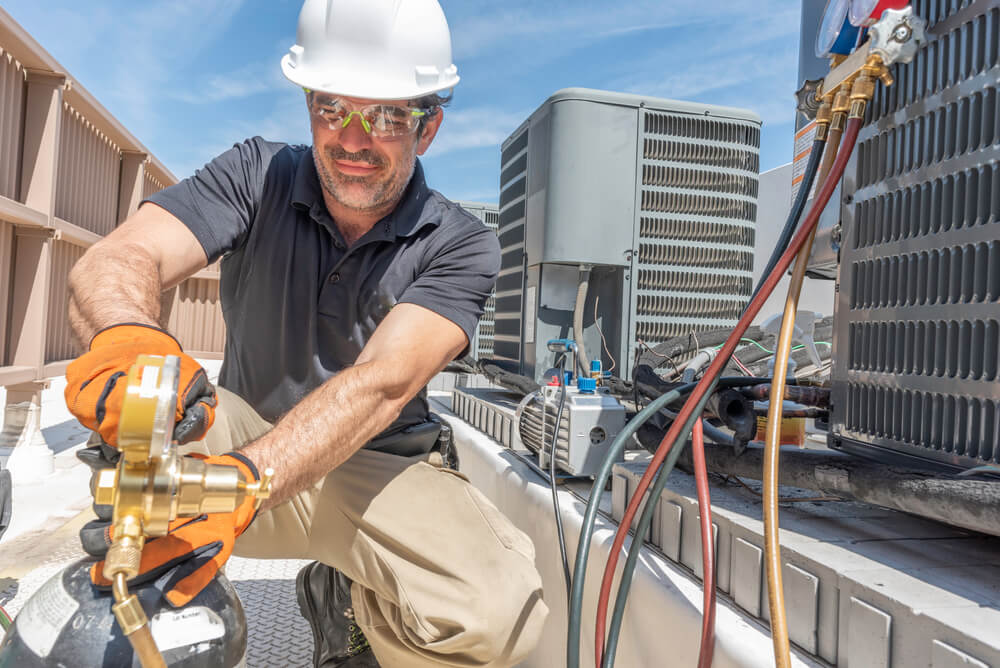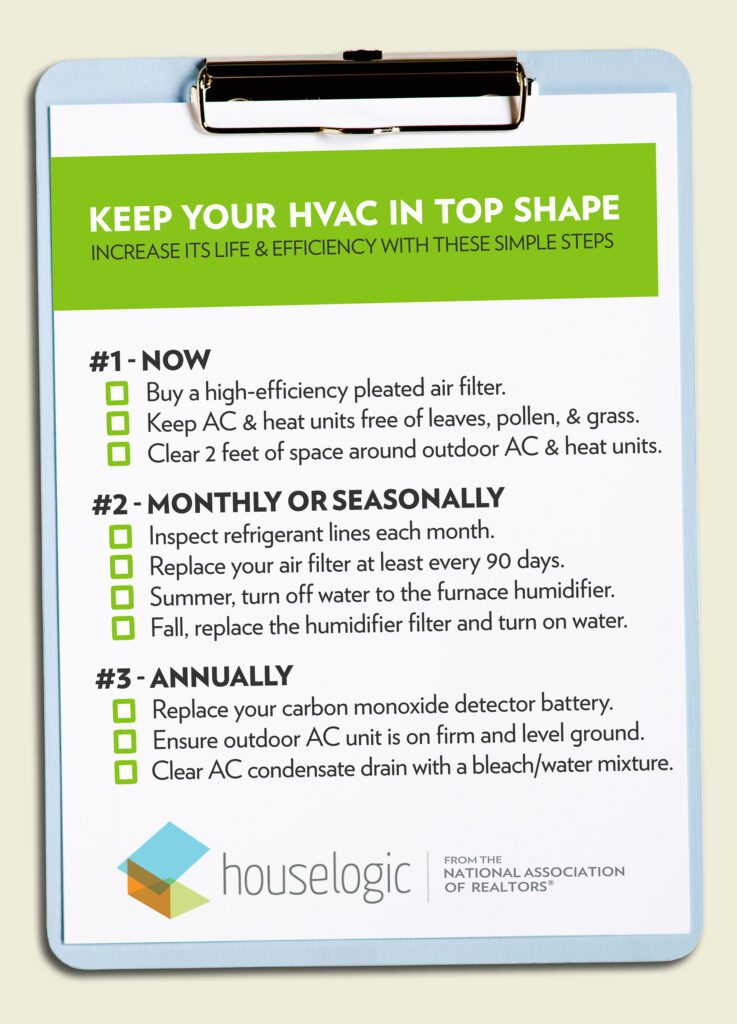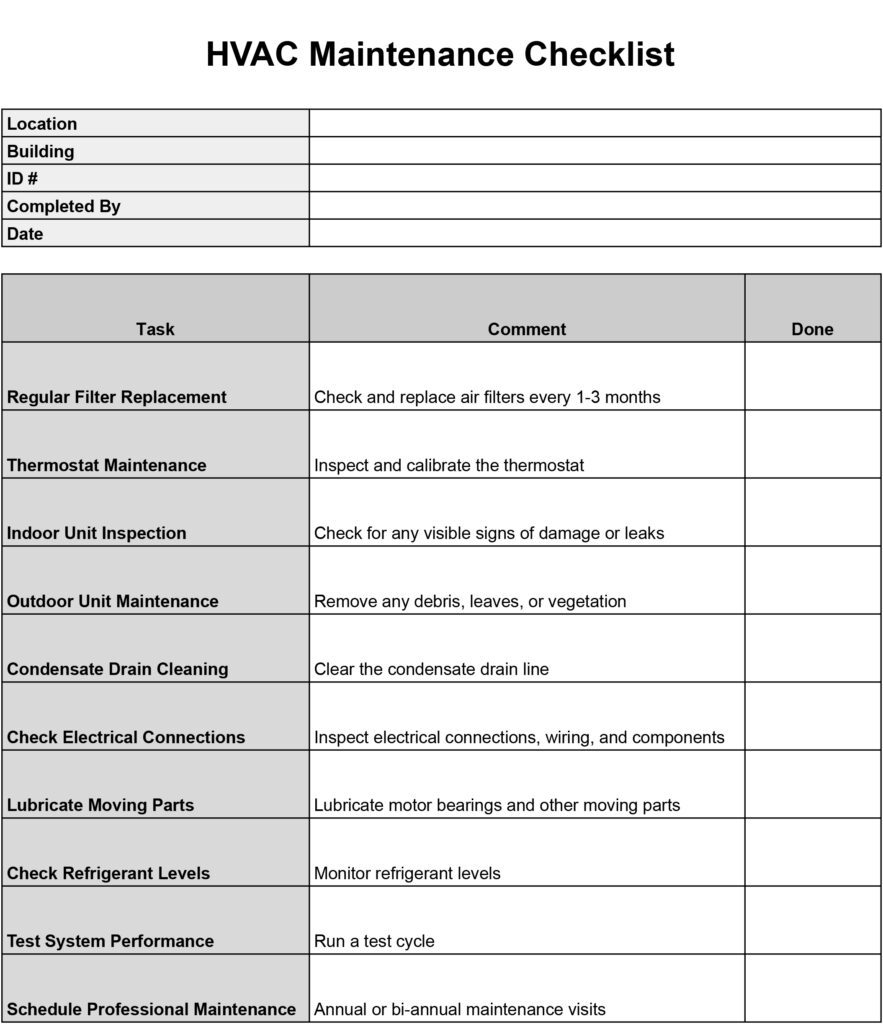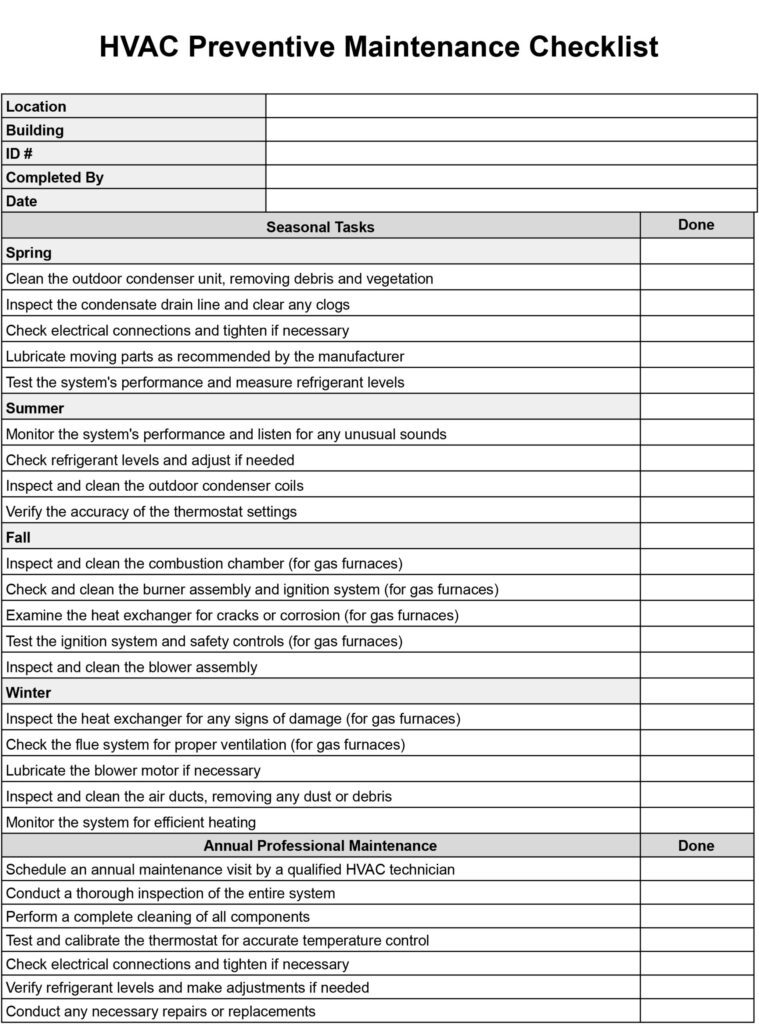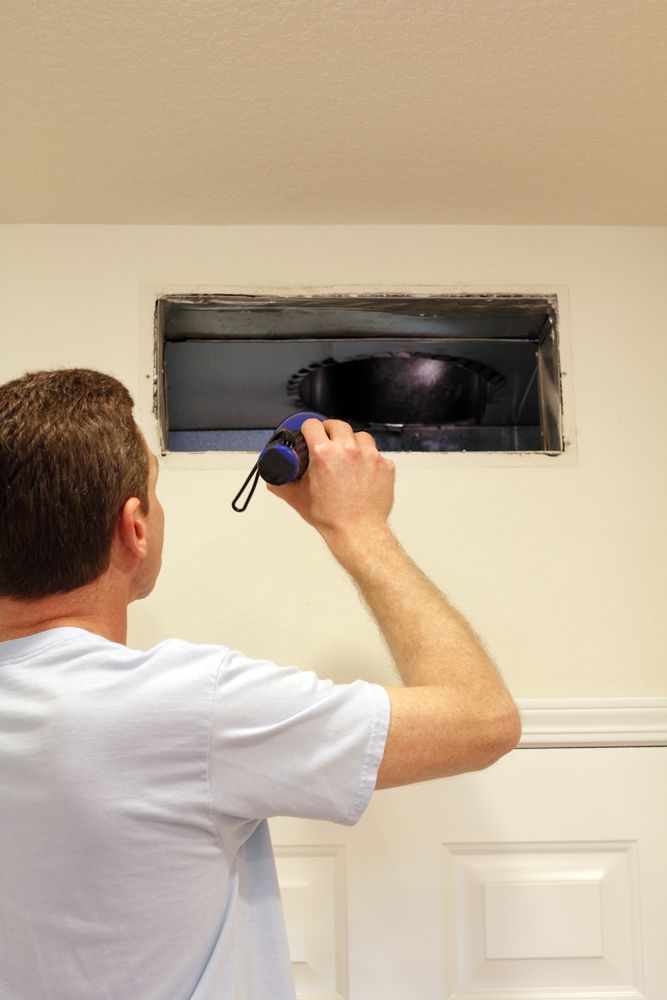Maintaining your HVAC system is essential for its longevity and efficiency. But how do you go about performing preventive maintenance on your HVAC? This article will provide you with some valuable tips and guidelines to help you keep your HVAC system in top shape and minimize any potential breakdowns or costly repairs. From regular filter replacements to checking for leaks and lubricating moving parts, you’ll learn everything you need to know to effectively maintain your HVAC system and ensure its optimal performance. So, let’s dive right in and discover the key steps to keeping your HVAC system running smoothly!
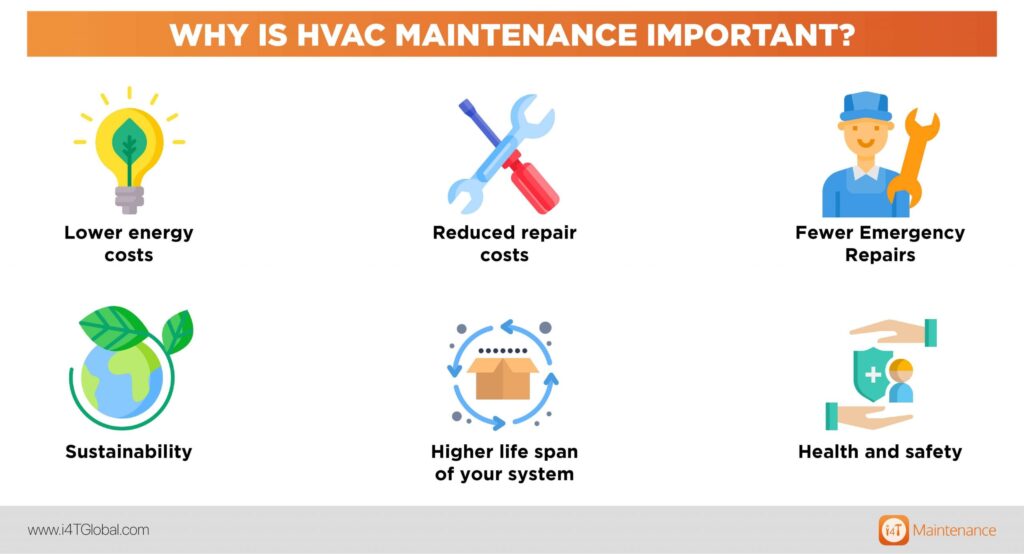

Steps to Perform HVAC Preventive Maintenance
Inspecting and Cleaning Air Filters
Inspecting and cleaning air filters is a crucial step in HVAC preventive maintenance. Air filters help to remove dust, debris, and allergens from the air before it is circulated throughout your home. Over time, these filters can become clogged with dirt, reducing the efficiency of your HVAC system and compromising the quality of your indoor air. By regularly inspecting and cleaning the air filters, you can ensure that your system is functioning optimally and that the air in your home remains clean and healthy.
Checking Thermostat Settings
The thermostat plays a key role in regulating the temperature and comfort levels in your home. As part of HVAC preventive maintenance, it is important to regularly check and adjust the thermostat settings as needed. Make sure that the thermostat is set to the appropriate temperature for each season and that it is functioning properly. This will not only help to maintain a comfortable indoor environment but can also contribute to energy savings by preventing unnecessary heating or cooling.
Examining Electrical Connections
The electrical connections in your HVAC system are responsible for powering and controlling its various components. As part of preventive maintenance, it is important to inspect these connections to ensure they are secure and free of any damage or corrosion. Loose or damaged electrical connections can lead to inefficiencies in the system and even pose a safety risk. By regularly examining the electrical connections, you can identify and address any issues before they escalate and cause further damage.
Cleaning and Lubricating Moving Parts
The moving parts in your HVAC system, such as fans and motors, require regular cleaning and lubrication to maintain smooth and efficient operation. Over time, these components can accumulate dirt and debris, which can hinder their performance and potentially lead to increased energy consumption. As part of preventive maintenance, it is important to clean these moving parts and apply lubricant as needed. This will help to reduce friction and wear, prolonging the lifespan of your HVAC system and improving its overall efficiency.
Inspecting and Cleaning Condensate Drain
The condensate drain in your HVAC system removes the excess moisture produced during the cooling process. Over time, this drain can become clogged with algae, mold, or debris, leading to water backups and potential damage to your system. As part of preventive maintenance, it is essential to inspect and clean the condensate drain regularly. This can be done by flushing the drain line with a mixture of bleach and water or using a specialized cleaner. Keeping the condensate drain clean and free of obstructions will help to prevent water damage and ensure the proper functioning of your HVAC system.
Checking Refrigerant Levels
Refrigerant is a vital component of your HVAC system’s cooling process. If the refrigerant levels are too low, the system will struggle to cool your home effectively and efficiently. As part of preventive maintenance, it is important to regularly check the refrigerant levels and ensure they are within the manufacturer’s recommended range. If the levels are low, it may indicate a leak, which should be addressed promptly by a professional HVAC technician. By maintaining optimal refrigerant levels, you can ensure that your system performs at its best and avoids unnecessary strain.
Inspecting and Cleaning Coils
The coils in your HVAC system, both the evaporator coil and the condenser coil, play a crucial role in the cooling and heating processes. Over time, these coils can become obstructed with dirt, dust, and other debris, reducing their efficiency and potentially leading to system malfunctions. As part of preventive maintenance, it is important to regularly inspect and clean these coils. This can be done using a soft brush or a vacuum cleaner to remove any accumulated debris. By keeping the coils clean, you can ensure that your HVAC system operates at maximum efficiency and avoids unnecessary strain.
Examining Ductwork for Leaks
The ductwork in your HVAC system is responsible for distributing the cooled or heated air throughout your home. Over time, the ducts can develop leaks or cracks, which can result in air loss and reduced efficiency. As part of preventive maintenance, it is important to examine the ductwork for any signs of leaks or damage. Look for visible gaps or tears and listen for any air hissing sounds when the system is running. If any issues are identified, they should be promptly repaired to ensure that conditioned air reaches all areas of your home efficiently.
Testing Safety Controls
Safety controls are an important feature of your HVAC system, designed to protect against potential hazards such as fires or gas leaks. As part of preventive maintenance, it is essential to regularly test these safety controls to ensure they are functioning properly. This can involve checking the automatic shut-off mechanisms, testing the carbon monoxide detectors, and verifying the functionality of any other safety features in your system. By testing these controls, you can minimize the risk of accidents and promote a safe operating environment for your HVAC system.
Inspecting and Cleaning Blower Components
The blower components in your HVAC system are responsible for circulating the conditioned air throughout your home. Over time, these components can become dirty or clogged, hindering their performance and reducing the airflow. As part of preventive maintenance, it is important to inspect and clean the blower components regularly. This can involve removing and cleaning the blower wheel, checking the motor and fan belts for wear, and cleaning any debris from the blower housing. By keeping the blower components clean and well-maintained, you can ensure optimal airflow and promote better indoor air circulation.
Key Components of HVAC Preventive Maintenance
Air Filters
Air filters play a crucial role in maintaining the indoor air quality of your home. They help to remove dust, pollen, pet dander, and other allergens from the air, creating a healthier and more comfortable environment. As part of HVAC preventive maintenance, it is important to regularly inspect and clean or replace the air filters. This can prevent the filters from becoming clogged, ensuring that the HVAC system operates efficiently and that the air in your home remains clean and fresh.
Thermostat
The thermostat is the control center of your HVAC system, allowing you to regulate the temperature and comfort levels in your home. As part of preventive maintenance, it is important to regularly check and calibrate the thermostat settings. This ensures that the temperature is accurately controlled and that the system operates efficiently. By maintaining proper thermostat settings, you can optimize energy usage and ensure a comfortable indoor environment.
Electrical Connections
The electrical connections in your HVAC system are responsible for powering and controlling its various components. As part of preventive maintenance, it is essential to inspect these connections regularly. Loose or damaged electrical connections can lead to inefficiencies in the system, increased energy consumption, and even safety hazards. By examining and tightening the electrical connections, you can prevent potential issues and ensure the safe and efficient functioning of your HVAC system.
Moving Parts
The moving parts in your HVAC system, such as fans, motors, and belts, need regular cleaning and lubrication to maintain smooth and efficient operation. As part of preventive maintenance, it is important to clean these parts and apply lubricant as needed. This prevents friction and wear, prolongs the lifespan of the components, and ensures the optimal functioning of your HVAC system. By taking care of the moving parts, you can maintain the efficiency and performance of your system.
Condensate Drain
The condensate drain in your HVAC system removes the excess moisture produced during the cooling process. As part of preventive maintenance, it is crucial to inspect and clean the condensate drain regularly. A clogged or blocked drain can lead to water backups and potential damage to your system. By keeping the condensate drain clean and free of obstructions, you can prevent water damage and maintain the proper functioning of your HVAC system.
Refrigerant Levels
Refrigerant is a vital component of your HVAC system’s cooling process. As part of preventive maintenance, it is important to regularly check the refrigerant levels and ensure they are within the manufacturer’s recommended range. Low refrigerant levels can result in reduced cooling capacity and increased energy consumption. By maintaining optimal refrigerant levels, you can ensure that your HVAC system operates efficiently and effectively.
Coils
The coils in your HVAC system, both the evaporator coil and the condenser coil, play a crucial role in the cooling and heating processes. As part of preventive maintenance, it is important to regularly inspect and clean these coils. Over time, the coils can become obstructed with dirt, dust, and other debris, reducing their efficiency and potentially causing system malfunctions. By keeping the coils clean, you can ensure that your HVAC system operates at maximum efficiency and avoids unnecessary strain.
Ductwork
The ductwork in your HVAC system distributes the cooled or heated air throughout your home. As part of preventive maintenance, it is important to inspect the ductwork for any leaks or damage. Leaky ducts can result in air loss and reduced efficiency. Regular inspection and repair of the ductwork can ensure that conditioned air reaches all areas of your home efficiently, improving comfort and energy efficiency.
Safety Controls
Safety controls are essential features of your HVAC system that protect against potential hazards. As part of preventive maintenance, it is important to regularly test these safety controls. This can involve checking the automatic shut-off mechanisms, testing the carbon monoxide detectors, and verifying the functionality of any other safety features in your system. By ensuring that the safety controls are in proper working order, you can minimize the risk of accidents and promote a safe operating environment for your HVAC system.
Blower Components
The blower components in your HVAC system are responsible for circulating the conditioned air throughout your home. As part of preventive maintenance, it is important to inspect and clean the blower components regularly. This includes removing and cleaning the blower wheel, checking the motor and fan belts for wear, and cleaning any debris from the blower housing. By keeping the blower components clean and well-maintained, you can ensure optimal airflow and promote better indoor air circulation.


Frequency of HVAC Preventive Maintenance
Monthly Maintenance Tasks
Some HVAC preventive maintenance tasks should be performed on a monthly basis. These tasks include checking and replacing air filters, inspecting the thermostat settings, and cleaning any visible debris from the blower components. By performing these monthly tasks, you can ensure that your HVAC system continues to operate efficiently and effectively.
Quarterly Maintenance Tasks
In addition to monthly maintenance tasks, there are also quarterly tasks that should be performed as part of HVAC preventive maintenance. These tasks include examining and cleaning the condensate drain, inspecting the electrical connections, and checking the refrigerant levels. By addressing these tasks every three months, you can prevent potential issues and keep your HVAC system in optimal condition.
Annual Maintenance Tasks
Annual maintenance tasks are essential for the long-term performance and lifespan of your HVAC system. These tasks should be performed by a professional HVAC technician. Annual maintenance typically includes a comprehensive inspection of all system components, cleaning and lubrication of moving parts, inspection and cleaning of coils, examination of the ductwork for leaks, and testing safety controls. By scheduling annual maintenance, you can identify and address any potential issues before they lead to costly repairs or system breakdowns.
Benefits of HVAC Preventive Maintenance
Improved Energy Efficiency
One of the key benefits of HVAC preventive maintenance is improved energy efficiency. When the various components of your HVAC system are clean, well-maintained, and operating optimally, the system requires less energy to heat or cool your home. This results in lower energy consumption and reduced utility bills. By regularly performing preventive maintenance, you can ensure that your HVAC system operates at peak efficiency, saving you money in the long run.
Enhanced Indoor Air Quality
Another important benefit of HVAC preventive maintenance is enhanced indoor air quality. By regularly inspecting and cleaning air filters, coils, and blower components, you can remove dust, allergens, and other contaminants from the air circulating in your home. This contributes to a healthier indoor environment, particularly for individuals with allergies or respiratory conditions. Clean air filters and coils also help to eliminate musty odors and reduce the likelihood of mold growth. By maintaining good indoor air quality, you can enjoy a comfortable and healthy living environment.
Extended Equipment Lifespan
HVAC systems are a significant investment, and it is important to maximize their lifespan to get the most value out of them. Regular preventive maintenance can help to extend the lifespan of your HVAC equipment. By keeping the various components clean, well-maintained, and functioning properly, you can minimize wear and tear, reduce the risk of breakdowns, and avoid costly repairs. A well-maintained HVAC system can last significantly longer than one that is neglected, saving you money in the long term.
Reduced Repair Costs
Another benefit of HVAC preventive maintenance is reduced repair costs. By regularly inspecting your system and addressing any issues early on, you can prevent small problems from escalating into major malfunctions. For example, if a loose electrical connection is identified and tightened during routine maintenance, it can prevent damage to other components and save you from a costly repair down the line. By investing in preventive maintenance, you can catch and resolve issues before they become expensive problems.
Improved Comfort Levels
HVAC preventive maintenance also contributes to improved comfort levels in your home. When your system is functioning optimally, it can more effectively regulate the temperature and humidity, providing consistent and comfortable conditions throughout your living space. By addressing any issues with the thermostat, inspecting and cleaning the ductwork, and ensuring the proper functioning of the blower components, you can enjoy a more comfortable environment year-round. Improved comfort is essential for your overall well-being and enjoyment of your home.


Importance of Professional HVAC Preventive Maintenance
Evaluating System Performance
Professional HVAC preventive maintenance is important because it allows for a comprehensive evaluation of your system’s performance. A trained technician can assess the efficiency, effectiveness, and safety of your HVAC system through thorough inspection, measurement, and testing. This evaluation helps to identify any potential issues or areas of improvement. By entrusting the maintenance of your HVAC system to a professional, you can ensure a thorough assessment of your system’s performance.
Expert Troubleshooting and Repairs
Another important aspect of professional HVAC preventive maintenance is access to expert troubleshooting and repairs. If any issues are identified during the maintenance visit, a trained technician can diagnose the problem accurately and provide the necessary repairs or adjustments. Professionals have the knowledge, skills, and specialized tools to address HVAC issues effectively and efficiently. By relying on professional maintenance, you can rest assured that any problems will be resolved by an experienced technician.
Compliance with Manufacturer’s Warranty
Many HVAC systems come with manufacturer’s warranties that require regular professional maintenance to remain valid. Manufacturers understand the importance of preventive maintenance in maintaining the performance and lifespan of their products. By adhering to the maintenance requirements outlined in the warranty, you can ensure that your HVAC system remains eligible for any potential repairs or replacements covered by the warranty. Professional HVAC preventive maintenance helps you comply with the warranty conditions and protect your investment.
Time and Cost Savings
While professional HVAC preventive maintenance does involve an initial investment, it can ultimately save you time and money in the long run. By entrusting the maintenance of your HVAC system to a professional, you can avoid the time-consuming task of performing maintenance tasks yourself. Additionally, professional maintenance can identify and resolve potential issues before they escalate, saving you from costly repairs or system breakdowns. By investing in professional maintenance, you can enjoy peace of mind and ensure the long-term performance and efficiency of your HVAC system.
DIY vs Professional HVAC Preventive Maintenance
Cost and Time Considerations
When it comes to HVAC preventive maintenance, homeowners often consider the cost and time required for the tasks. DIY maintenance may seem more cost-effective, as it does not involve hiring a professional technician. However, it is important to consider the time commitment and potential costs of making mistakes during DIY maintenance. Professional HVAC preventive maintenance may involve an upfront cost, but it saves homeowners valuable time and ensures that the maintenance tasks are performed correctly.
Expertise and Equipment
Professional HVAC technicians possess the knowledge, expertise, and specialized equipment required to perform comprehensive preventive maintenance. They are familiar with the intricacies of HVAC systems and can efficiently and effectively carry out maintenance tasks. DIY maintenance, on the other hand, may lack the same level of expertise and equipment. Without proper knowledge and tools, homeowners may inadvertently cause damage or overlook critical maintenance requirements.
Safety and Compliance
Safety is another crucial consideration when deciding between DIY and professional HVAC preventive maintenance. HVAC systems involve electrical components, gas lines, and potentially hazardous refrigerants. Trained professionals have the necessary safety training and understanding of safety protocols to ensure that maintenance tasks are performed safely and without risk of injury. Additionally, professional maintenance helps homeowners comply with safety regulations and guidelines.
Comprehensive System Evaluation
One of the major advantages of professional HVAC preventive maintenance is the comprehensive evaluation of the entire system. Trained technicians can identify potential issues, assess system performance, and provide expert recommendations for improvements or repairs. DIY maintenance may focus on basic tasks but may overlook critical aspects of system evaluation. By opting for professional maintenance, homeowners can benefit from a thorough assessment and ensure optimal functionality of their HVAC system.
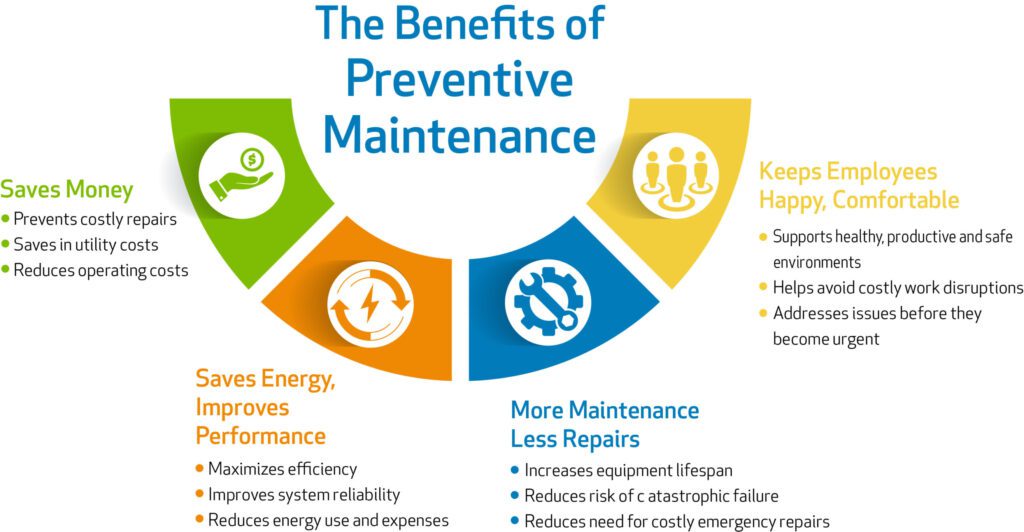

Common HVAC Preventive Maintenance Mistakes to Avoid
Neglecting Regular Filter Replacement
One common mistake in HVAC preventive maintenance is neglecting to regularly replace air filters. Air filters become clogged with dirt and debris over time, reducing system efficiency and indoor air quality. It is important to follow the manufacturer’s recommendations and replace air filters according to the recommended schedule. Neglecting this task can lead to decreased system performance and increased energy consumption.
Ignoring Thermostat Calibration
Another mistake in HVAC preventive maintenance is ignoring thermostat calibration. Thermostats can become inaccurate over time, resulting in uneven temperature regulation and unnecessary heating or cooling. It is important to regularly calibrate the thermostat and ensure that it accurately reflects the desired temperature. Ignoring thermostat calibration can result in discomfort and wasted energy.
Overlooking Electrical Connection Inspections
Overlooking electrical connection inspections is a common mistake in HVAC preventive maintenance. Loose or damaged electrical connections can lead to system inefficiencies and safety hazards. It is important to regularly inspect electrical connections and ensure that they are secure and free from damage or corrosion. Overlooking this task can result in system malfunctions and potentially dangerous situations.
Skipping Condensate Drain Cleaning
Skipping condensate drain cleaning is another common mistake in HVAC preventive maintenance. The condensate drain removes excess moisture from the system, and a clogged drain can lead to water backups and potential system damage. Regularly inspecting and cleaning the condensate drain helps prevent these issues. Skipping this task can result in water damage and compromised system performance.
Neglecting Refrigerant Level Check
Neglecting to check refrigerant levels is a significant mistake in HVAC preventive maintenance. Low refrigerant levels can hinder system cooling capacity and increase energy consumption. Regularly checking and maintaining optimal refrigerant levels is essential for system efficiency. Neglecting this task can lead to reduced cooling performance and potentially costly repairs.
Ignoring Coil Cleaning
Ignoring coil cleaning is a common mistake in HVAC preventive maintenance. Coils can become dirty and obstructed, reducing their efficiency and negatively impacting system performance. Regularly inspecting and cleaning coils, both evaporator and condenser, is important for optimal system operation. Ignoring coil cleaning can lead to decreased system efficiency and potential damage to other components.
Neglecting Ductwork Inspection and Repair
Neglecting ductwork inspection and repair is another common mistake in HVAC preventive maintenance. Leaky or damaged ducts can lead to air loss, reduced efficiency, and uneven heating or cooling. Regularly inspecting ductwork and promptly addressing any leaks or damage ensures efficient airflow throughout the home. Neglecting this task can result in discomfort and increased energy consumption.
Bypassing Safety Control Testing
Bypassing safety control testing is a critical mistake in HVAC preventive maintenance. Safety controls protect against potential hazards, such as fires or gas leaks. Regularly testing these controls ensures their proper functioning, minimizing the risk of accidents. Ignoring safety control testing can compromise the safety of the system and pose a danger to homeowners.
Ignoring Blower Component Cleaning
Ignoring blower component cleaning is a common mistake in HVAC preventive maintenance. Blower components, such as the fan and motor, can become dirty or clogged, hindering system performance. Regularly inspecting and cleaning these components ensures optimal airflow and proper system operation. Ignoring blower component cleaning can result in decreased airflow and reduced comfort levels.
Improper DIY Maintenance
One of the most common mistakes in HVAC preventive maintenance is improper DIY maintenance. While it is possible for homeowners to perform certain maintenance tasks, such as filter replacement, many aspects of HVAC maintenance require specialized knowledge and equipment. Improper maintenance can result in damage to components, reduced efficiency, and safety hazards. It is important to understand your limits and involve a professional technician when necessary.
In conclusion, HVAC preventive maintenance plays a vital role in ensuring the optimal performance, energy efficiency, and longevity of your HVAC system. By following the steps outlined in this article and understanding the key components and benefits of preventive maintenance, you can take proactive measures to maintain a comfortable and healthy indoor environment. Whether you choose to perform maintenance tasks yourself or enlist the help of a professional HVAC technician, regular preventive maintenance is essential for the optimal functioning of your HVAC system. Prioritizing preventive maintenance will not only save you time and money but also enhance energy efficiency, indoor air quality, and overall comfort in your home.


